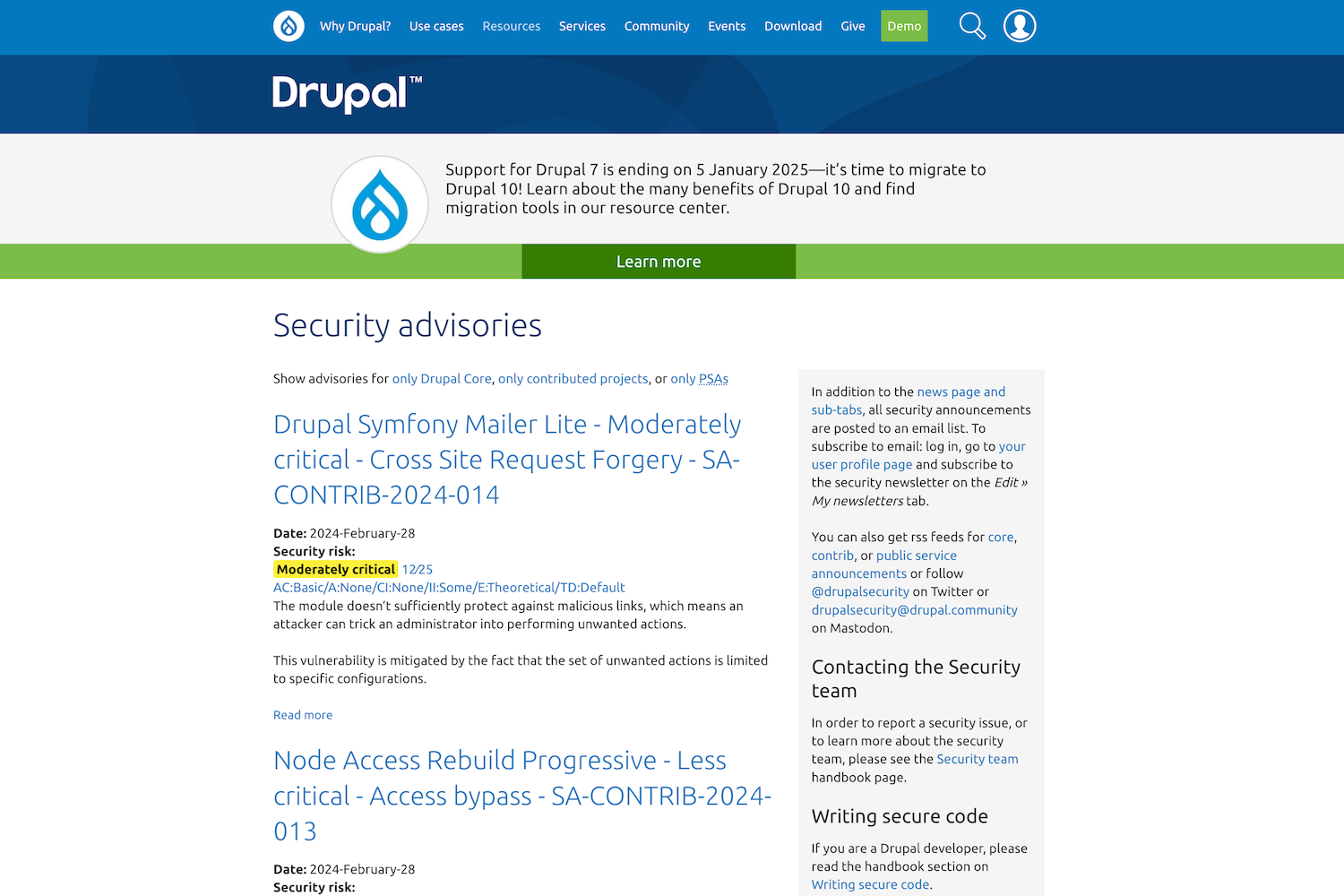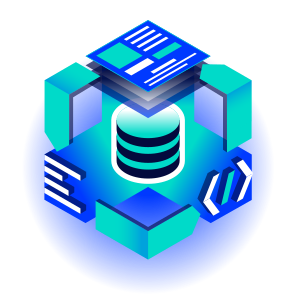
Why is Drupal a Perfect CMS for Higher Education? 8 Reasons
Universities need a solid online presence to attract students, connect with stakeholders, provide valuable information, and foster collaboration among different departments. Choosing the right content management system is therefore crucial so that you can easily develop a user-friendly, attractive, and informative website. This article will explore why Drupal is the ideal CMS for higher education institutions.
Why is Drupal a robust CMS for higher ed?
Drupal is an open source, flexible, and cost-effective content management system that aligns perfectly with the unique needs of higher education institutions. This is proven by the fact that the world's top universities have chosen it. For example, Oxford University, Princeton University, the Massachusetts Institute of Technology (MIT), and University College London (UCL) have built their college websites on Drupal. Discover the eight compelling reasons why you should consider this system.
1. Flexibility and customization
Drupal stands out for providing universities with unmatched flexibility and customization options. One of its key strengths lies in its support for diverse content types. Universities can use text, images, videos, infographics, and more. This ensures educational websites can effectively communicate their message and publish attractive materials.

Furthermore, Drupal enables universities to define the visual style of the website, going beyond standard templates. It offers the capability for custom layouts. This means institutions can design their websites with a unique and tailored appearance (e.g., design structure, color schemes, and typography), reflecting their distinct identity and branding. This approach reinforces the institution's individuality.
That's not all. Drupal's modular architecture enables the integration of various modules to extend functionality. You can customize your website by adding or removing modules to meet specific requirements. Whether it's improving SEO, incorporating social media integration, or adding ecommerce capabilities, Drupal's modular system provides flexibility.
2. Seamless content authoring and workflow
With the Drupal content management system, you can customize the content creation and publishing workflow to streamline the editorial process. Drupal enables you to define workflows with various moderation statuses (e.g., a Draft for the writer or a Review for the subject matter expert), ensuring that content goes through a double-check and approval process before publication.
By using this CMS, you have the possibility to create custom taxonomies and tags to categorize and organize content effectively. This feature is precious for universities with diverse departments, courses, and research topics, allowing for a structured and easily navigable website.
You can also enhance the security of your website data thanks to a robust user management system. It allows you to define unlimited user roles and assign permissions. This customization feature ensures that different people, such as administrators, editors, and visitors, have distinct levels of access and editing rights within the website (for example, to the news section or landing pages).
3. Strong security in CMS for higher ed
This CMS stands out as an exemplary choice for university websites dealing with sensitive information.
Drupal's security capabilities are at the core of its comprehensive framework, carefully designed to guard against potential vulnerabilities. The platform takes a layered approach to security, incorporating Access Control Lists and database abstraction (preventing SQL injections), forming API with CSRF protection, encryption, and strong authentication protocols.
This system’s power lies also in its proactive and vigilant ecosystem. The Drupal community comprises a diverse group of developers, security experts, and enthusiasts who are dedicated to promptly identifying and addressing potential security issues. Thanks to them, the platform remains resilient in the face of emerging threats with timely patches. The Drupal team also provides regular security advisories and community messages.

Source: Drupal.org
Drupal’s commitment to regular updates also reflects credibility as a secure CMS. The system’s development team consistently releases security patches and updates for core and contributed modules. It addresses newly discovered vulnerabilities and reinforces its defenses. This commitment to ongoing improvement empowers website administrators to stay ahead of potential threats.
4. Scalability and performance
Drupal's scalability is a hallmark feature that aligns with the evolving needs of universities. As academic institutions experience an influx of students, faculty, and administrative data, the CMS’s ability to handle increasing volumes of content and user traffic ensures that colleges can effortlessly adapt to the growing demands of their online platforms.
At the heart of Drupal's scalability is its modular architecture. It enables the easy integration of additional features as needed. One standout example is the Views module. Using it, you can create, customize, and display content in various formats without complex coding. As universities expand their content libraries, the Views module ensures that information is organized and accessible, promoting efficient navigation for users.
Another notable module is Paragraphs, which offers a more granular and structured approach. It’s helpful for universities managing diverse types of content, from articles and news updates to event listings and multimedia. The Paragraphs module enables administrators to create modular and reusable content components that you can easily multiply on subpages or marketing landing pages.
As university websites experience surges in traffic, ensuring optimal performance becomes paramount. Drupal is inherently equipped to handle high volumes of traffic efficiently. Its architecture delivers fast and responsive experiences, even during peak periods. It has a robust caching system and an efficient codebase. The platform is designed to perform tasks with minimal resource usage, optimizing server performance and response times.
5. Drupal’s multisite capability
Many educational institutions operate numerous websites for different departments, campuses, research centers, and academic initiatives. Drupal's multisite capability allows administrators to do it efficiently and without wasting time.
At the core of this feature is the ability to manage and deploy multiple websites from a single platform. This centralized control streamlines the administrative workload and ensures consistency and coherence across all digital assets. You can efficiently oversee updates, security measures, and content management for all affiliated sites, fostering a unified digital presence.
However, Drupal's multisite installation doesn't sacrifice autonomy. Each individual website within the multisite network retains its independence, authorizing departments or campuses to customize their online presence according to their unique needs.
6. Multilingual support
Most universities must effectively communicate with diverse student groups and faculty.
Drupal also helps in this case. This platform allows you to create websites in multiple languages. Thanks to that, your digital presence can be more accessible and welcoming to international users.
In this CMS for higher education, you can customize the language settings and translations to cater to a global or multilingual audience. Drupal also offers language-switching options that contribute to the user-friendly nature of the system. Online visitors can seamlessly navigate between different language versions of the web page.

Source: Droptica.com/blog
7. Integrations with third-party systems
Universities use different solutions to handle important tasks regarding student information, learning, and administration. Drupal is excellent at integrating with third-party systems, ensuring everything works smoothly. This helps create a connected and organized digital setup for educational institutions.
With Drupal’s robust API framework, you can easily integrate with tools, such as:
- Student Information Systems (SIS): it enables managing student data, enrollment, grades, and other academic information. Drupal facilitates seamless integration with SIS platforms, ensuring real-time data synchronization and providing a unified view of student information across the digital ecosystem.
- Learning Management Systems (LMS): this is crucial for universities delivering online courses and facilitating e-learning. Drupal's compatibility with leading LMS platforms enables integration with course content, assessments, and student progress, offering a cohesive learning experience for educators and students.
- Administrative third-party tools: from finance and human resources to library management, universities employ various administrative tools to streamline operations. Drupal's integration capabilities extend to these administrative systems, promoting efficient data flow and reducing the manual effort required for data transfer and synchronization.
8. Effective search with Elastic Search and Apache Solr
University websites are like libraries, filled with all kinds of information. They provide details about courses, faculty, news, and events. Colleges must have an excellent search engine to help users find needed content. That's where Elastic Search and Apache Solr come into the picture. They're prepared to quickly zip through mountains of content and present visitors with exactly what they're searching for.
Drupal makes it easy to add these powerful search tools to the website. Integration is straightforward, thanks to modules and plugins. Once set up, they work smoothly within the Drupal environment. Why are they game-changers for higher education websites?
Elastic Search and Apache Solr are fast and deliver highly accurate search results. This means that whether a student is looking for a specific course or a researcher - for related academic papers, they can find information quickly. Even if their search terms are highly specific or technical because these tools understand and process complex queries.
Not everyone seeks the same things. Elastic Search and Apache Solr let you customize search results, so what's important to you comes up first. This is handy for showcasing essential academic programs or upcoming events on the website. These modules also support advanced search features, such as faceted search, autocomplete predictions, and geolocation-based results. This intuitive and interactive approach enhances the user experience.
As universities grow, so does the volume of content on their websites. These search tools can handle the increasing load effortlessly, ensuring the search function remains fast and reliable no matter how much data is added.
Why is it important to choose a smart CMS for higher education?
A robust content management system, such as Drupal, is the backbone of a university's digital strategy, playing a pivotal role in shaping its online identity and functionality. An effective school content management system serves multiple purposes.
In the academic world, you need a smart CMS that can smoothly handle various types of content. Whether scholarly articles or event updates, this system acts as a central hub with an easy-to-use interface for admins and editors to organize and publish content effortlessly. It makes administrative tasks easier and keeps the digital presence dynamic and up-to-date.
Universities serve a diverse audience, including students, faculty, researchers, and alumni. A robust CMS must go beyond the usual interfaces, offering user-friendly designs for this varied group. Easy navigation, organized information, and responsive design create a positive experience, engaging and satisfying visitors as they explore the college’s virtual space.
For academia, you need to choose a CMS that's more than just a content storage. Faculty, department heads, and content creators should work together smoothly to update courses, share research, and organize events. An advanced CMS for higher education includes vital collaboration tools, making workflows efficient with version control and real-time communication. This not only boosts operational performance but also adds to the overall productivity of the university community.
A smart CMS also allows institutions to create an engaging online experience that showcases campus culture, extracurricular activities, and notable achievements. Interactive elements, multimedia content, and personalized user journeys come together to tell a compelling digital story of the institution.
The Drupal content management system for universities - summary
Selecting the suitable CMS is a crucial move that significantly influences how a university appears online. Thanks to Drupal's features, such as flexibility, multisite ability, multilingual support, and more, academic institutions can confidently move toward creating a lively, flexible, and captivating online space.
If you're creating a website for your institution or rebuilding an existing one, you need the assistance of experienced professionals. At Droptica, we know that Drupal is a CMS for higher education, and we can help you get the most out of it.













